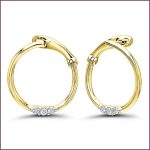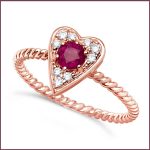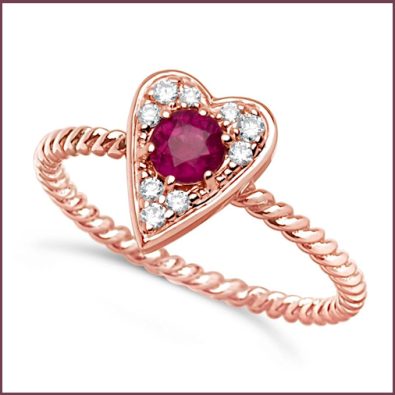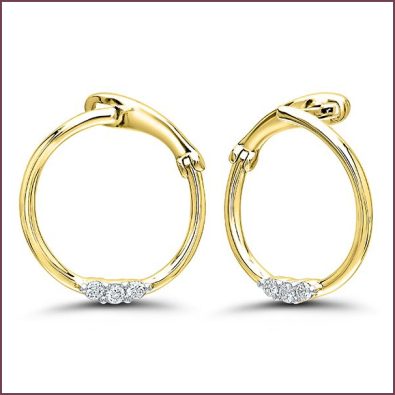Up and Coming Niche Markets
Niche markets are key to drawing in customers and improving the bottom line for today’s retail stores. Jewelers looking to stand out need to look at market sweet spots that will resonate with consumers. Two categories that show consistent growth despite economic fluctuations are men’s and youth jewelry.
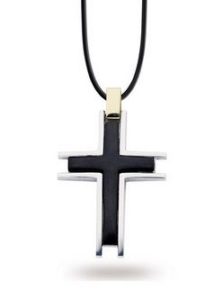 The boom men’s jewelry is experiencing is one of the most relevant changes in the category. Over the past 10 years, men have dramatically increased spending on jewelry, fashion and personal grooming. Total U.S. sales of men’s accessories jumped nearly 29 percent from 2012 to 2014, rising from $11.5 billion to $14.8 billion, with jewelry sales surging from $2.9 billion to $4.3 billion during that period, reports NPD Group.
The boom men’s jewelry is experiencing is one of the most relevant changes in the category. Over the past 10 years, men have dramatically increased spending on jewelry, fashion and personal grooming. Total U.S. sales of men’s accessories jumped nearly 29 percent from 2012 to 2014, rising from $11.5 billion to $14.8 billion, with jewelry sales surging from $2.9 billion to $4.3 billion during that period, reports NPD Group.
Even more robust, children’s wear is overtaking men’s and women’s, boosted by the “infiltration of fashion” in the category that’s immune to economic fluctuations, reports the Business of Fashion. The market research firm, Fashionbi, estimates the children’s wear market in the U.S. reached over $156 billion in 2015, citing kids are more aware of trends and dictating style choices.
While these categories represent a small percentage of overall sales for jewelers, they’re consistent growth markets that build customer relationships, leading to more and bigger sales. Season-less, both categories foster business yearlong. Jewelers should mention these products to every customer from the wedding couple to the casual browser.
Men’s Wear
There has been significant growth of men’s luxury accessories from 2009 to 2014 with increases upwards of 50% for jewelry and watches, cites Euromonitor International. It reports men in the U.S. are more likely to buy accessories due to greater availability, changing styles at work, demographic shifts, and new societal norms on grooming. There’s more information for men as to what to wear and how to wear it, blogs and social media spotlighting street and celebrity style, credits Ruth 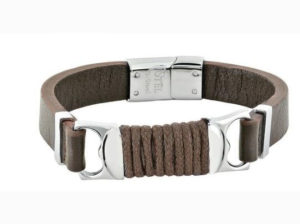 Grothaus, merchandise manager, IBGoodman, Newport, Kentucky.
Grothaus, merchandise manager, IBGoodman, Newport, Kentucky.
“If you haven’t thought about expanding in the men’s market you’re missing out on the fastest growing category in jewelry,” hails Grothaus. “It is a niche to stand apart in with offerings not found everywhere. Building a male clientele has unlimited benefits for repeat business and loyal customers.”
Jewelers need to carry styles that appeal to traditional and modern buyers, advises Cora-Lee Colaizzi, director of marketing and senior merchandiser, Quality Gold, Fairfield, Ohio. “A mix of gold styles and alternative metals will give a good price range and hit a variety of age groups. Buyer feedback and better store demos will help jewelers adjust the assortment to grow the category.”
Stacking bracelets is a huge trend for men, especially mixing different types like beads, leather and chain, says Scott Rauch, president SHR Jewelry Group, New York. Adaptability is key, adds Grothaus, citing as an example IBGoodman’s latest “Made in the USA” collection of leather bands with interchangeable silver clasps. Also popular are bead bracelets in gems like tiger’s eye and lava, says Wendy Fox, director of sales independent division, Richline Group, New York and its Dolan Bullock brand.
Sales demonstrate bracelets are bestsellers throughout all metals, cites Colaizzi. While contemporary metals like stainless steel and titanium remain favorites, 10K and 14K gold is in demand. Trending too, says Grothaus, are gold bracelets with diamonds, rose gold and rose-colored metals, and pendant necklaces in religious themes. There’s also more attention given to classically male props like cuff links, tie bars and lapel pins with a twist.
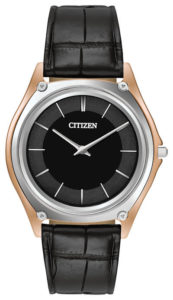 Watches continue to top essential accessories lists. For some men, a watch is the only accessory they wear besides a wedding ring, says Priscilla-Marie Ilarraza, Seiko, New York. At recent trade shows the trend was for thinner cases, with ultra slim models by Bulova and Citizen as favorites. Lightweight is key too, says Samantha Barker, public relations and social media coordinator, Citizen, New York, who describes men as more active, requiring a comfortable watch to transition from office to gym. Overall, it’s about minimal maintenance, says Ilarraza, like Seiko’s travel-friendly watches that automatically adjust the time.
Watches continue to top essential accessories lists. For some men, a watch is the only accessory they wear besides a wedding ring, says Priscilla-Marie Ilarraza, Seiko, New York. At recent trade shows the trend was for thinner cases, with ultra slim models by Bulova and Citizen as favorites. Lightweight is key too, says Samantha Barker, public relations and social media coordinator, Citizen, New York, who describes men as more active, requiring a comfortable watch to transition from office to gym. Overall, it’s about minimal maintenance, says Ilarraza, like Seiko’s travel-friendly watches that automatically adjust the time.
Create a “men’s corner” advises Rauch. Integrate men’s watches, fashion accessories, and wedding bands in one area that speaks to masculine aesthetics and encourages exploration. He suggests incorporating images of men wearing jewelry and displays that illustrate how styles work together. Many men are uncomfortable in jewelry stores, says Barker, who cites technology a draw and watches an opportunity for retailers to display product in the open to test out. Colaizzi encourages male sales associates wear jewelry to suggestively sell it. Jewelers should also target female gifters by sharing ideas on social media.
Children’s Wear
“Parents don’t hesitate to give the world to their children today,” told Ambika Zutshi, CEO of Fashionbi to luxurydaily.com in February. She attributes a combination of factors including parents having children at an older, more financially stable age; an increasing birth rate; and baby boomer grandparents with the means to dote on grandkids for boosting market growth in the sector.
With this heightened fashion awareness, the way in which brands develop and produce children’s wear has shifted. Clothing and accessories look less childlike and more like mini versions of popular adult styles, reports Business of Fashion.
Not surprising, what’s trending for adults translates for children, as in popular charm bangles. A great example is the latest collection “Wishes” by the London brand Chrysalis, a Richline Group company, in colorful enamel cupcakes, rainbows and ice cream cones. Similarly, LeStage convertible bangles by the Marathon Company is trending with teens for its interchangeable clasps in designs like shell, flower, dog bone, and initials, says Audrey Robbins, Marathon Company for the Attleboro, Massachusetts-manufacturer. With the trend for personalization, ID bracelets are coveted in bangle and chain-link styles.
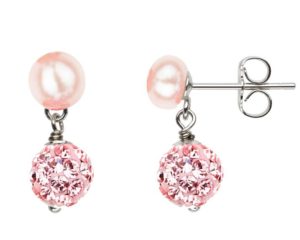 Pearls are a favorite for girls, including studs and pendants. Fox notes that Honora, a Richline brand in New York, does well with box sets of candy color pearl studs and jewelry ensembles. Kathy Grenier, marketing director Imperial Pearl, Providence, Rhode Island, touts its Pearl-by-Pearl program as a way to develop customer relationships with the gift of pearls given for special occasions over a childhood that builds a necklace.
Pearls are a favorite for girls, including studs and pendants. Fox notes that Honora, a Richline brand in New York, does well with box sets of candy color pearl studs and jewelry ensembles. Kathy Grenier, marketing director Imperial Pearl, Providence, Rhode Island, touts its Pearl-by-Pearl program as a way to develop customer relationships with the gift of pearls given for special occasions over a childhood that builds a necklace.
Classic jewelry in silver and gold sell well, says Robbins, citing stud earrings a strong category in motifs like heart, butterfly, crown, star, and bow. She also lists lockets and religious pendants bestsellers. Not surprising iconic brands like Disney are popular. Colaizzi reports strong demand for Quality Gold’s Licensed Character Watches.
Jewelry is the perfect gift for all occasions and there’s a lot to celebrate throughout a child’s life. “An investment in a keepsake to memorialize special celebrations is sought by parents and grandparents who love to spoil their children,” says Colaizzi. “Capture those sales opportunities and build a loyal customer base with product from infant through young adult.”
This niche is an attraction that gets people into the store and inspires impulse buys, says Robbins. Create an atmosphere that speaks to children featuring delightful motifs. “If it’s visible, it will sell. With minimal investment and space, jewelers can develop a department that will turn product year round.”
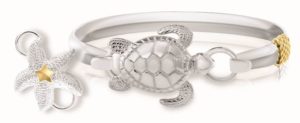 Social media, particularly Instagram is fueling the category, Zutshi told luxurydaily.com with kids-only accounts sharing daily looks. The Fashionbi exec advises brands capture kid’s attention young to cultivate lifelong relationships.
Social media, particularly Instagram is fueling the category, Zutshi told luxurydaily.com with kids-only accounts sharing daily looks. The Fashionbi exec advises brands capture kid’s attention young to cultivate lifelong relationships.

